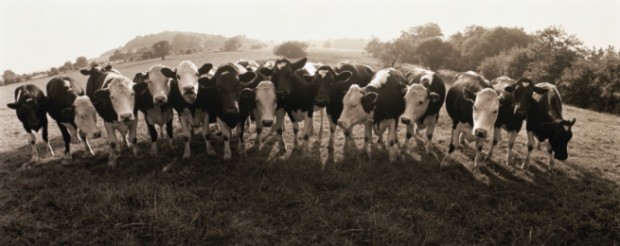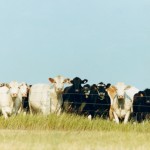Idaho Dairy Farmers Struggle to Find Optimism
It’s hard to find optimism about the state of Idaho’s dairy industry among the very people who operate farms, milk cows, and try to make a living selling their product. The Idaho Dairymen’s Association reports there were 569 dairies in the state as of September 30th, 2011. That’s a significant drop from a few years ago when in 2008, 800 dairies were licensed to sell milk.
“I don’t think anyone would want to get into a losing business,” says Sharon Bettencourt. She and her husband Luis own one of the largest dairy operations in Idaho. They have 60,000 cows spread across 11 facilities. “At this point, we are trying to hang on to what we do have…there is no room for growth.”
While the number of dairies is on the decline in Idaho, the number of milk cows and the production of things like milk, cheese and cottage cheese are on the rise. According to a study from Boise State University’s College of Business & Economics which looked at the economic impacts of the dairy industry in Idaho, the number of dairy cows here is up more than 35-percent.
“The producer has to be better at making more milk,” says Jeff Ackerman who is the dairy operations manager at Bettencourt Dairies. “Production has grown because economics have gotten harder — we’re producing more milk out of the same number of cows, we have to, to squeak out any margins” says Ackerman.
There are several reasons Idaho dairymen are feeling the pinch. One deals with the complicated pricing structure of milk and other dairy products. Cheese and milk function much like other globally traded commodities. Dairymen can’t name their own price based on their costs. At a time when the price of feeding a dairy cow has nearly doubled, that makes it tough Ackerman says.
“The cost of production has more than kept pace with the milk price. It’s outpaced it. Good quality alfalfa hay cost $150 per ton three years ago. Today it’s as high as $275,” says Ackerman.
Plus, Idaho consumers pay less for a gallon of milk than most places in the U.S. A gallon of whole milk costs just under $3.00 in Idaho, while the national average is more like $3.70.
For a small dairy, like the one Stacie Ballard and her husband Steve operate in Gooding, Idaho, rising feed prices and stagnant prices paid to farmers meant they needed to diversify. The Ballard’s have 60 cows and make cheese that is sold at local markets around the northwest. Plus, they run tours of their dairy and they are trying to make it a destination for school groups and tourists.
“I wanted to teach what I knew about the dairy industry” Ballard says, “we’re looking more at getting into tourism and retail dollars.”
The hang-up for the Ballard’s is financing. They’ve tried to get a loan for the last three years to expand their dairy tours. “If I went to the bank in 2007 they would have been falling all over themselves to give me a loan to expand my business” says Ballard, “now, it’s just harder.”
Jeff Ackerman at Bettencourt Dairies says even if a farmer has the capital to expand, he wouldn’t recommend it. “I wouldn’t get into the business here, not in Idaho”, Ackerman says. “Milk is too cheap and when you look at the input costs and what the average producer is getting paid.”
Here’s a look at the prices dairy farmers received for all milk in September 2010 and the preliminary numbers from September 2011. Idaho farmers receive less per 100 pounds of milk (Hundredweight or CWT) than dairy farmers in 22 other states.
[spreadsheet key=”0AiLU6Cs5LWZIdGJ1ZU5fTDZPZk16cDQwMDlwb29fbXc” source=”” sheet=0 filter=0 paginate=0 sortable=1]
Source: U.S. Department of Agriculture




